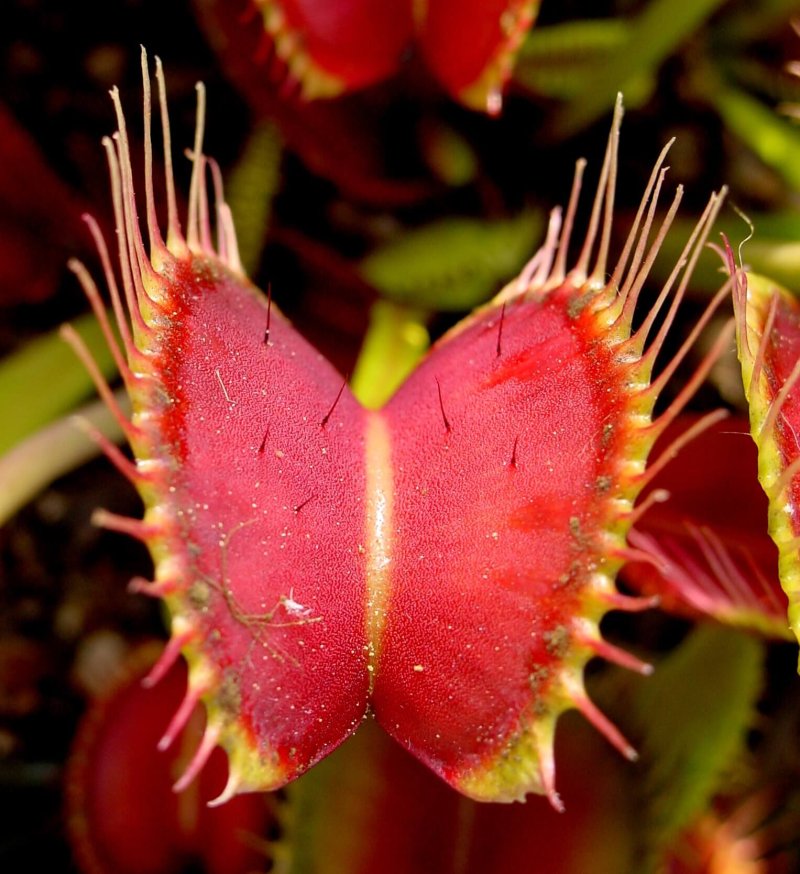A Venus flytrap’s short-term “memory” can last about 30 seconds. If an insect taps the plant’s sensitive hairs only once, the trap remains still. But if the insect taps again within about half a minute, the carnivorous plant’s leaves snap shut, ensnaring its prey.
How Venus flytraps (Dionaea muscipula) remember that initial touch has been a mystery. A new study reveals that the plants do so using calcium, researchers report online October 5 in Nature Plants.
…
Even though the carnivorous plant, famous for its jawlike leaves, has no brain or nervous system, it can apparently count to five and distinguish between live prey and things like rain, which could inadvertently trigger its leaves to snap shut, wasting energy (SN: 1/24/16). Previous research suggested that calcium plays a role in this process, but with the help of genetic engineering, [researchers] were able to actually see calcium in action.
The researchers added genes to the Venus flytraps that produce a protein, which glows green when exposed to calcium. When the team tapped one of the trap’s sensory hairs, the base of that hair began glowing, and then the glow spread through the leaf before beginning to fade. When the researchers touched the hair a second time — or touched a different hair on the leaf — within about 30 seconds, the trap’s leaves lit up even brighter than before, and the plant quickly snapped shut.































